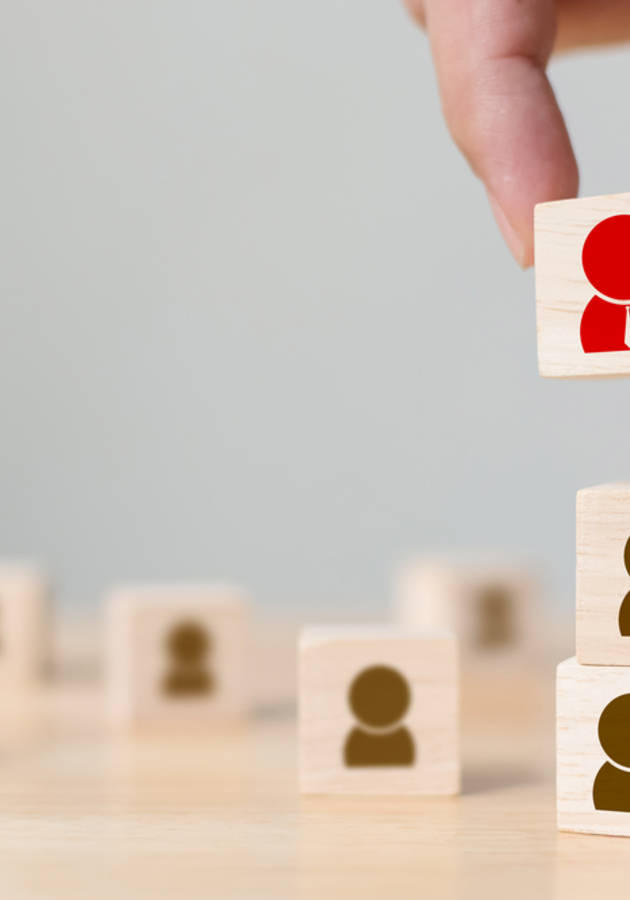In informal speech, we use the word ‘’chemistry’’ to refer to the sexual attraction between two people. Interestingly, discoveries in social neuroscience can now help us understand the reasons behind this word choice. The results of these discoveries are controversial, as they tear down the centuries-old belief that love is a mysterious force beyond our control. The truth is, our brains control the emotion of love with just a few chemicals. In ‘’The Chemistry Between Us,’’ Larry Young and Brian Alexander explain the mechanism of love, using neuroscientific knowledge. In that sense, it is a ‘’bold attempt to explain the previously unexplainable.’’ Get ready to learn more about love from a scientific angle!
A mysterious thing called love
Love has always been one of the most powerful forces on earth and often the reason for irrational behavior. We do many things out of love - marry someone with children, for example, even if our initial intention was to spend our lives without any. We change religion, move to another place, and do plenty of other things we never imagined we would do - all under the influence of love. For this reason, people often perceive love to be an inexplicable force beyond their control. However, the truth is different. ‘’Desire, love, and the bonds between people aren’t so mysterious after all,’’ the authors say.
When Young was doing doctoral studies in neuroscience, he started working with an unusual species of lizards. While conducting his experiments, he discovered that he could alter their mating behavior by giving them just one chemical. Later, he discovered that the same neurochemicals control reproduction in both people and animals. Comparing animal and human species in the context of love might sound odd or even offensive to some. However, animals, even the primitive ones, can tell us plenty about sexual behavior and bonding. Some of them are remarkably similar to people. For example, the small rodent species called prairie voles form monogamous relationships. In that union, males and females spend time together, take care of their young ones, and grieve each other's losses. The genes involved in these types of behaviors are the same ones that control similar behavioral patterns in humans.
In the end, the similarities between animals and humans help us understand our behavior better. Once we realize that love is not an outside force, but rather, is mostly conditioned by our biological traits, we can then take control of our decision-making.
After all, love is not the only emotion that has a biological base. Scientists have discovered that some of the values we thought were distinctive to humans, such as empathy or a sense of fairness, depend on brain chemistry, too.
Can a boy be raised as a girl?
The perception of love as an external force often leads people to try and externalize their behavior, tying it to something they cannot fully control. For example, in the second half of the 20th century, the feminist idea that the environment dictates gender behavior found fertile ground for developing corresponding scientific theories. One of them was created by psychologist John Money, who claimed that biological sex did not influence gender identity. Even though the experiment that would confirm this theory was hard to conduct, Money got lucky.
In 1965, identical twins Bruce and Brian were born perfectly healthy. Unfortunately, a botched surgical operation on the infant Bruce’s foreskin destroyed his penis. Money thought this accident was the perfect opportunity to examine his theory: the twins had the same genes and would have the same style of upbringing. The twins' parents agreed to participate and followed Money’s instructions: they had Bruce castrated, supplemented him with estrogen, changed his name to Brenda, and raised him as a girl.
Around the same time as Money’s experiment was going on, Cornell researchers were studying the case of girls who had been mysteriously turning into boys in Las Salinas, the Dominican Republic. These girls were born with female genitals and were being raised as girls. Around the age of puberty, however, they grew penises, and their behavior became more masculine.
The mystery of the girls in Las Salinas and Money’s experiment with the twins had something in common. They both showed that social settings do not affect the individual’s gender behavior. At the age of 14, Brenda (the boy raised as a girl) wanted to change ‘’her’’ name to David, and eventually had surgeries to remove breasts that had developed due to the estrogen intake. He also got penis and testicle implants. Later, he began taking testosterone and eventually married a woman.
In the case of the Las Salinas girls, Cornell researchers found that the condition had genetic origins. These ‘’girls’’ were actually boys from the beginning, but genetic mutations had caused their unusual development. When they were born, their testicles were tucked into their abdomens, and their clitorises were, in fact, undeveloped penises. In puberty, the increased levels of testosterone made their genitals fully develop.
The authors present these two cases to show that modified genitals and the environment cannot change the fact that the brains of these boys (once girls) had always been male.
The chemistry between sexes
The differences between male and female brains are obvious from childhood, and they manifest themselves in numerous ways. For example, say the authors, boys and girls develop different preferences for toys: boys like to play mainly with guns and trucks, while girls choose dolls. As Money's experiment showed, these preferences are not imposed by the environment: even when Brenda was surrounded by dolls, ‘’she’’ used to play with boy toys in secret.
Behavior-related differences grow even more due to the rush of hormones in puberty, which do not ‘’only change the way we look at the world (or, at least, the sexually charged part of it), they also greatly influence the way we behave in relation to it,’’ the authors note. From this period, the sexual behavior of both women and men is determined by the urge for reproduction.
When it comes to women, their behavior changes around the time when they begin to ovulate - the brief part of the monthly cycle when they can get pregnant - and their brains know this. For example, anxiety levels are generally lower in this period. They have more sexual desire, are more willing to approach men and act seductively. Additionally, their smell is different, their skin glows, and their body changes slightly (there’s a relatively lower waist-to-hip ratio). These changes might sound inappreciable, however experiments have shown that they can substantially affect the relationship between a man and a woman.
One interesting study on this topic documented that the ovulatory cycle affected the number of tips lap dancers earned. Researchers who compared strippers’ wages over a two-month period found that strippers in estrus earned around $90 more per shift than on other days. On the other hand, the wages of strippers on birth control pills were substantially lower, even compared to the wages that others earned on non-ovulation days.
It seems that during ovulation, a fertile woman’s brain makes her behave in ways that maximize her chances for reproduction. On the other hand, men are wired to read those subtle clues - the higher levels of testosterone motivate them to engage with women more during this period.
Oxytocin: the magic love potion
Prairie voles - the rodent species that form monogamous relationships much the same as people do - exhibit other behaviors that are similar to humans. For example, after mating, both male and female vole begin searching for a place where they can raise their pups. Once the pups arrive, both of them participate equally in nurturing them. Furthermore, if one of the voles dies, the other does not engage with other voles ever again.
After a series of experiments, scientists figured out what is the key to the voles’ monogamous behavior. When rodents mate, their brains release oxytocin. This hormone enhances their social memory - the ability to recognize each other. While other rodents also have social memory, it is not as good as the social memory in prairie voles. For example, the social memory of rats and mice is short-term, lasting only about an hour. If they are apart for more than that, they cannot recognize each other anymore, and behave as if they are meeting for the first time.
While people are having sex, their brains also release oxytocin. Just like in the case of prairie voles, oxytocin strengthens people’s social memory. Additionally, it reduces anxiety levels and increases the desire to bond.
Among mammals, the hormone oxytocin plays an important role in mother-infant bonding, as it induces maternal behavior. Interestingly, shepherds exploit this fact to make female sheep accept nursing orphaned lambs who had been rejected by their mothers. To trigger the bonding process, they stimulate the sheep's cervix and vagina (the same way they are stimulated while giving birth.) This stimulation makes their brains release oxytocin, which, in turn makes the sheep behave maternally, increasing the bond between the sheep and the orphaned lambs.
The oxytocin that is released during sex helps to improve the bond between two people. Since - unlike animals - people have sex even when they have no intention to reproduce, the authors tried to find other reasons for human sexual urges. They say, ‘’We believe that during human evolution the mother-infant bonding mechanism, shared across all mammalian species, has been tweaked so that women can use sex to establish a bond or to maintain one.’’
New visions of love?
Social neuroscience has unlocked numerous mysteries regarding love. As the authors put it, it has now been discovered that ‘’love is just chemicals stimulating neural activity on well-defined circuits, and not meant to elevate us to some kind of higher spiritual plane, but to lure us unthinkingly into reproduction, maximizing our evolutionary ‘fitness.’‘’
How can neuroscientific knowledge help us change our perspectives on love? The relationship between our brains on one side, and love, desire, and gender on the other side, allows us to be more conscious of what we are doing, and guard ourselves against plenty of risks.
However, the idea that our emotions and the actions they prompt originate in our brains is not new. Ancient Greeks saw this connection long before the series of experiments mentioned here confirmed it. For example, Greek physician Hippocrates wrote, ‘’Men ought to know that from the brain, and from the brain only, arise our pleasures, joys, laughter, and jests, as well as our sorrows, pains, griefs and tears.” Despite the centuries-old speculations about the chemical origins of love, however, people have continued creating stories about it. The authors believe that is mainly because science has not yet answered a crucial question: ‘’Why do we love?’’
When science cannot explain the mysteries we face, religion, philosophy, and myth step in to create stories that bring more sense to our lives. ‘’We tell ourselves a story,’’ the authors say. ‘’That is what it means to be a human, especially one in love.’’ No matter what science says in the case of love, people continue to celebrate it, along with the accompanying feelings of happiness, sadness, and sense of fulfillment it brings.
Alexander says that even Young, the man who spends his days exploring the link between love and biochemical reactions in the brain, ‘’experiences love for his wife and children as a passion undiminished by his reductionist perspective.’’
Final Notes
It takes great courage to write a book that analyzes love using scientific methodology. It also takes courage to read the book that questions everything people believe in - and most of them believe that love is an otherworldly force in the universe. However, the authors approach the subject with great mastery: managing to look at love from a scientific angle without tearing down the core of our beliefs.
12min Tip
Be more aware of the chemical processes happening in your brain when you fall in love - this will help you observe your relationship from a more rational angle.





























